- Administrator
- Albums and Singles
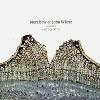 This is the first full length collaboration between noise’s oldworkhorse, Merzbow, and one of the more exciting artists in the field,John Wiese. The album is slow to take off but when it does, all enginesare blazing and both eardrums are burst. It is one of the betterreleases from Merzbow in recent months and another string to Wiese’sbow.
This is the first full length collaboration between noise’s oldworkhorse, Merzbow, and one of the more exciting artists in the field,John Wiese. The album is slow to take off but when it does, all enginesare blazing and both eardrums are burst. It is one of the betterreleases from Merzbow in recent months and another string to Wiese’sbow.Misanthropic Agenda
Multiplication starts out with typical Merzbow all out noise and static. Wiese and ‘bow aren’t breaking any new ground on “Bonanza,” it still is the aural equivalent of toilet paper soaked in caustic soda. Despite it being completely ear destroying, it still seemed like both artists were not giving it their all. The feeling I got was that both of them were holding back, testing the waters between them. The album continues for a couple tracks as a mildly interesting but ultimately predictable assault.
As the album progresses it gets more interesting. “Spell” provides lulls and drops in the noise before slapping you in the face, repeatedly. There are lots of fascinating sounds being used on this track, they are only there for a fleeting moment but they make a very welcome change to the usual feedback and white noise. There’s one part that sounds like the noise from the rails as a subway train stops but the train is spontaneously combusting as it does it.
The last two tracks are where things go from interesting to riveting. “Erotic Westernscape” starts from a roar of sound that made me feel the same way that Sunn O))) (who both artists have also collaborated with) manage to make me feel. A traditional Merzbow wall of noise takes over but there is a sound like a detuned guitar feedbacking drifting in and out of the mix. The noise softens and a more atmospheric droning breaks up the piece before the noise returns with a vengeance. The title track is the only track produced by Akita. It starts out with the sounds of gunfire and tape hiss before building up to shattering electronic noise. A wide palette of sounds covering the audible range makes “Multiplication” both captivating and highly unpleasant to listen to. At almost half an hour, it is a rewarding endurance test.
Multiplication starts off shaky but works its way up to something somewhat special. At first the album felt like neither artist wanted to push things too far in fear of stepping on the other’s toes. However towards the end Wiese and Akita both get into the flow and make some exquisite noise (especially in the more ambient sections of Multiplication). Should these two men continue to collaborate, a truly monumental slab of noise is inevitable.
samples:
Read More
- Administrator
- Albums and Singles
 Volcano the Bear's ability to swing between the experimental, the traditional, energetic performance and pop structure means there are high expectations on Aaron Moore and this, his solo debut. Not only does this package include an exceptional album but the quick to purchase can also find accompanying visuals on a DVD constructed by Italian filmmaker Francesco Paladino (and an extra unreleased track).
Volcano the Bear's ability to swing between the experimental, the traditional, energetic performance and pop structure means there are high expectations on Aaron Moore and this, his solo debut. Not only does this package include an exceptional album but the quick to purchase can also find accompanying visuals on a DVD constructed by Italian filmmaker Francesco Paladino (and an extra unreleased track).
Ringing in the album are a half dozen swinging alarm clocks on mile long pendulums on "The Scars on her Cheek Bring Dreams to my Eyes" which bring an instant hydra-headed meditative atmosphere. These sharp edged ringing metal tones are either dreams of riding the fairground or sleeping through a city block of burglaries.
The film looks like it’s meant to be taken in a single trip with its movie style credits a fake TV static and test card ending. It may be very competently built and professional looking DVD but the imagery is best left to the imagination in this case. The slo-mo snowfall, negative work, blurring and dislocated cold imagery of a figure in blue are all fairly familiar to viewers of experimental media. It’s unfortunate then that the visuals only end up complementing the sounds on two tracks. When it does work it’s the combination of the elements and the shelter of modern life and the film adds to the music. "Three Guineas" is a brief nursery tune that becomes invested with the adult world when accompanied with a rain splattered view from a car’s windscreen. The song is transformed into a portent of doom.
"How Outside are we Today?" also benefits from a view from inside a moving vehicle, except this time its looking over and beyond a luminous segment of Glorious Technicolor orange to landscape drained of color. This track’s (the single Luke Fowler co-write) slowly constructed tone shifts into an everlasting moment of icy frozen drone infected by digi damage. There’s a brief and structureless background spider web of percussive clatter from Moore’s fellow Daniel Padden associate Alex Neilson.
The thumb piano and casual thumping movement on "Euphony is the Name of a Telephone" has a dry reverb that sits in the same cold empty room as you. The track could do with being extended by a few minutes and perhaps if Moore had originally thought of the material as finished solo work this may have ended up being the case. The extra track "Foil Bandage" is the only real musical disappointment here, a stretch of cymbal tapping waves and a fairly unremarkable rise and fall drone make me glad its stuck on the DVD and the not the album; its easier to disregard that way.
Read More
- Administrator
- Albums and Singles
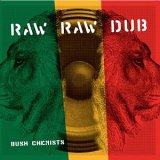 London's Bush Chemists are practioners of dub, but it ain't yourgranddaddy's dub. Imagine if Lee Perry had been into the UK housescene, dropping E instead of puffing ganj and gyrating to pulsing highnotes rather than grooving to throbbing basslines. Where Perry and likeluminaries were noodlers—fooling around with tracks in the studio,throwing in a horn, fading out a guitar at random—the Chemists' musicfeels like they're trying to be scientists, using structured originalcompositions rather than dubbing out existing tracks.
London's Bush Chemists are practioners of dub, but it ain't yourgranddaddy's dub. Imagine if Lee Perry had been into the UK housescene, dropping E instead of puffing ganj and gyrating to pulsing highnotes rather than grooving to throbbing basslines. Where Perry and likeluminaries were noodlers—fooling around with tracks in the studio,throwing in a horn, fading out a guitar at random—the Chemists' musicfeels like they're trying to be scientists, using structured originalcompositions rather than dubbing out existing tracks.Roir
They hit heavy and deep as any classic dub creation, but there'ssomething missing, an intangible hard to name but so prevalent that themusic at times strains to carry the dub label. Not always, however: "SpeakerRocker" is the closest to the old school style, with a deep continuousbassline punctuated by a stacatto drum riff. Right on its heels,"East of Jaro," opens up with a laughably tinny horn sequence thatsounds as if it were lifted from a third-rate world record, andcontinues with dance-worthy (not dancehall, mind) drum machinesamples.
Because of dub's freewheeling beginnings, it's hard to draw theline as to what dub should or shouldn't be. By default the originalpractioners used organic sounds to craft their wares—a flighty guitarriff, an elusive bass thump, or the uniquely jarring crashingreverberation you get when you kick or drop an amp. Coupled with thesonic trappings of the equipment used, the resulting sound is warm andfuzzy, especially when heard on original vinyl. So when Raw Raw Dub doesn'tuse any of these—instead opting for computerized drum sequences,drum-machine snares and hi hats and even high-tech keyboard noises,sounding clean and somewhat sterile—the label "dub"doesn't fit as well. In fact, I get the impression the Bush Chemistsdidn't start out as dub practioners. It's as if they took a wrong turnand got stuck in dub on the way to the club scene.
But this aloneisn't enough to sink the record. Great dub sneaks up on you, pulling abassline from under you and dropping it back in your ear when you leastexpect it. The Chemists don't hit this peak too often—predicatble aswell as mechanical at times—butjust often enough to channel dub's zeitgeist. Even withthe newfangled sound snippets, the Chemists get on some deep, heavygrooves, and the new elements add an unexpected element to theexperience. Aside from minor crimes like the Tijuana Brass-hornsection, Raw Raw Dub nails it, and establishes the Bush Chemists as competent practitioners of an ever-fading art.
samples:
Read More
- Administrator
- Albums and Singles
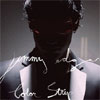 I'd love it if someone put out a new slab of roller-rink rockingelectro every few months so that I could at least daydream aboutrollerskating while I'm in my car with the subwoofer thumping funky 808throbs at me. Jimmy Edgar's newest is such a record: a lovelyslice of new school meets old school on wheels. If I can leaveall of the record's fashion-conscious hoo ha behind, I'll be just fine.
I'd love it if someone put out a new slab of roller-rink rockingelectro every few months so that I could at least daydream aboutrollerskating while I'm in my car with the subwoofer thumping funky 808throbs at me. Jimmy Edgar's newest is such a record: a lovelyslice of new school meets old school on wheels. If I can leaveall of the record's fashion-conscious hoo ha behind, I'll be just fine.I can't tell if Jimmy Edgar is infusing old school Detroit electro witha newfangled sense of digital arrangement or if he's making moderndance music with a retro pop-locking fetish, but either way, it'sworking. Moments on Color Striplike the opening of "My Beats" sound as if they could have escaped froma Cybotron 12" from twenty years ago, but they are always juxtaposedwith something decidedly new-sounding like the filtered synth trills in"I Wanna Be Your STD," and that makes this record a wonderful way torevisit old school electro without feeling like I should just put on anold record instead. A lot of the rhythm programming here simplywasn't possible with a lot of early '80s hardware, so the record isn'tlikely to be confused for a relic. Still, Edgar's not simplyreferencing the past here; it's more like he's pulling it as if througha time machine to show how the supposed future sound of music from afew decades ago still sounds futuristic today with a few tweaks andcuts.
"Personal Information" actually sounds like it could be an earlyMadonna instrumental with some smart production and over-the-top synthbass hooks. The vocals on cuts like "Color Strip Warren" are (true tothe genre) mostly monotonous and serve either as a simple hook or justas an added texture amidst a flurry of drum programming and bassthrobs. I can't fault him for lyrics that don't particularly resonatebecause he's frankly working from a mold that's light on substance andheavy on groove. Luckily, the groove is all here, and it's authentic.
I imagine that kids growing up with laptop battles and plug-ins and anendless stream of data from which to sample in a world of complexdigital production and synthesis at their fingertips might find Color Stripa little too straightforward and even routine. Those on the lookout fortredy retro-styling might have alarms going off with the album's coverimage, also. To me, however, the beauty of the record is that itbalances the new school tricks with old school charm. Vocoders and 808sand wiggly synth leads are de rigeur for this sort of record, andthere's no reason to spaz all of that out with a million micro-editsand the DSP kitchen sink. I'm glad to find records like this every oncein a while, and while I'm not about to join an electro 12" of the weekclub and play the whole thing into the ground, Color Strip is an excellent addition to my collection, and one that's going to take a lot of trips around the roller skate dance floor.
samples:
Read More
- Administrator
- Albums and Singles
 Lavishly packaged in a beautifully presented wallet, this two-disc recording of Earth live in New York serves as a wonderful epilogue to their recent album Hex. Featuring the same line up as on that album, Live Hex sees Carlson and company showcasing their latest material and applying their newer, sparser sound to older songs from Earth’s back catalogue.
Lavishly packaged in a beautifully presented wallet, this two-disc recording of Earth live in New York serves as a wonderful epilogue to their recent album Hex. Featuring the same line up as on that album, Live Hex sees Carlson and company showcasing their latest material and applying their newer, sparser sound to older songs from Earth’s back catalogue.aRCHIVE
The first disc begins with a non-album track from the Hex sessions, “Plague of Angels,” which slowly builds up the mood into powerful and almost joyous ambience. The recording quality is like an audience recorded bootleg but much clearer and James Plotkin has mastered the album masterfully; when the kick drum is hit the room shuddered and I could feel it through the furniture. Not something I’m normally be impressed with apart from the fact that I had the volume on a low setting. The previously released tracks from Hex sound different on this album. “Raiford” sounds more oppressive and heavier than the studio version. Most of the differences are possibly due to the lack of overdubs on the live recordings; Carlson put layers of banjos and guitars over each other on the album which softened the tracks. With just the lower toned guitars (both regular and baritone) the music weighs a few tons.
One of the most interesting parts of the album for those familiar with Earth are the new versions of older songs. “Ouroboros is Broken” from Earth's first EP sounds like a completely new song. I was utterly astonished to see what it was when I checked the track listing. It then segues into “Coda Maestoso in Fb Minor,” which again sounds utterly different to the original. Whereas it used to be a fuzzed out textbook example of stoner metal at its finest, it is now sounds like damnation made music. It seems like it’s slower and heavier, like someone put a huge rock on a chain around its neck.
The second disc is a 3” CD with what I take to be the encore on it. The combination of a regular CD and a 3” CD is a nice touch. The two tracks on it are a perfect finisher for the album. “Dire and Ever-circling Wolves” is more of that cinematic Western of the Damned styled tracks from Hex. The closing piece, “Divine and Bright," was another great update of an older piece. Yet again it is completely mutated in its mood and feeling with Earth’s new style. At this point of the album I am kicking myself for not taking a cheap flight to the UK to see them on their tour.
Live Hex isn’t strong enough to act as a replacement to its parent studio album but it does serve as an excellent document of Earth’s current incarnation. One slight problem I had with it was the editing between tracks (to cut out the band tuning between songs) as it seemed a little rough, at one point it sounds like the crowd is mid cheer then instantly “Raiford” starts, almost mid-riff. However Live Hex is certainly the best of all the available Earth live albums. It is a commanding recording that shows that despite turning off most of the fuzz, Earth are still one of the heaviest and most formidable bands on their namesake.
samples:
Read More
- Administrator
- Albums and Singles
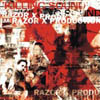 RazorX is the production team of Brits The Bug (Kevin Martin of TechnoAnimal, God, Ice, and more) and The Rootsman, who make blistering,aggressive hardcore dancehall tracks with the levels pinned to the redunderneath some of some of the most creative Jamaican MCs, and thisawesome two CD set collects the first ten 7" singles.
RazorX is the production team of Brits The Bug (Kevin Martin of TechnoAnimal, God, Ice, and more) and The Rootsman, who make blistering,aggressive hardcore dancehall tracks with the levels pinned to the redunderneath some of some of the most creative Jamaican MCs, and thisawesome two CD set collects the first ten 7" singles.A friend of mine from work was born and raised in Jamaica, and he goes backhome quite often (it gets cold up here in Boston) and comes back withbootleg mix CDs and DVDs he buys on the streets of Kingston. Thevariety and flavor of stuff that ends up on these mixes are out of thisworld. The music scene is vibrant and flourishing, and to me it'salmost saddening to see only the people who are -influenced- by theJamaicans (see the indie crowd's warm embracing of M.I.A., Rhythm andSound, Lady Sovererign, etc,...) make the big waves around these parts.The MCs on the mixes that he's returned with that I've heard aresimilar in their execution to the ones here: using the voice as arhythm instrument as well as a melodic instrument, but the music isquite different. The Jamaicans music is much more pleasant andhedonistically driven, while Razor X are far more enraged, matching theborderline brutal lyric deliveries with music that's equally asrelentless.
Killing Sound unsurprisingly lauches with "Killer," featuring He-Man, a tune that has been arguably played out between the Bug's PressureLPand singles from both Razor X and Tigerbeat 6's Shockout, but thesong has yet to get old for me. It's matched in power and aggression bythe following "WWW" featuring Mexican, but both are upped by the evenlouder and faster "Slew Dem," taking things into overdrive, featuringWayne Lonesome, who's also made the rounds with Bug associate Kid 606in the last couple years. While it's strongly based in dancehallreggae, they flirt with other electronic styles like hard techno on"Problem Version" (a "version" on disc B without a corresponding original on disc A) anddrum and bass on "Yard Man" featuring El Feco.
I was having drinks with my aforementioned friend from work onThursday night and out of nowhere he started talking about the Jamaicandialect of English, and how, while a lot of English words, in hiswords, have been 'bastardized,' there's plenty of words and terms andsayings that have absolutely no roots in English. Listening to lyricsfrom the Jamaican MCs (both here and elsewhere) it's clear that I sureas hell don't understand even close to everything that's being said, soit's difficult for me to comment on the lyrical content. What I donotice on Killing Sound is that things are far morecomprehensible for a white guy like myself than the Jamaican imports.Only by the end, with a reprise of "Killer" featuring Warrior Queen onthe mic instead of He-Man, does the lyrical delivery come closer to themore animated Carribbean-based Jamaicans.
The differences in sound in no way makes me discount this album orthe music created by people from England or Philadelphia or Berlin: thesound of The Bug and Rootsman with the MCs is brilliant, and reminds mehow much I loved Pressure and ache for its follow-up. The musicon disc A is so intense, however, that it's hard to do much to asidefrom dance to and have fun to. Its attention-commanding qualities makefor a difficult listen to while working or trying to concentrate onsomething other than the music. Disc B is the B-sides collected, whichare the more instrumental 'dub' versions of the A-sides. It makes for asomewhat odd listen from start to finish of disc A and B, so I sayleave disc A in the car and use for both long trips and slow drivesaround the city and tote around disc B in a portable for working out ortaking public transport. The power isn't diminished for disc B in anyway, but with less intense lyrics and more free-flowing music make iteasier to use in more situations.
samples:
Read More
- Administrator
- Albums and Singles
The actions and arguments of the Recording Industry Association of America and some of its most powerful members exemplify a complete and utter disregard and contempt for the interests and behavior of musicians, independent record labels, and, most importantly, the music-buying public. The RIAA seeks to regulate the behavior of consumers and actors in a free market via unreasonable means and at their expense, financially and otherwise. Its claims of supporting "creative vitality" and "artists' rights" are disengenuous, as the RIAA represents the corrupt and exclusionary oligopoly of major record labels, Hollywood film studios, and corporate entertainment media outlets. That certain "indie" labels have membership in this association is not indicative of an RIAA looking out for their best interests.
Among our grievances...
-
The assault on legitimate free market consumer
behavior, including fair use "ripping" of digital
files for individual portable electronic music players
and laptops, (See: "RIAA
Says Ripping CDs to Your iPod is NOT Fair Use",
Electronic Frontier Foundation, February 15, 2006)
- The shameful practice of suing music fans and their
families (particularly when the target is underage)
for unreasonable punitive sums so as to make examples
of them (See: "Internet
activists help get lawyer for woman accused of
piracy", Associated Press, January 26, 2006)
- The "copy protection" schemes of major record labels,
antithetical to legitimate consumer behavior and
supported by the RIAA, that go so far as to violate
the privacy rights of our citizenry (See: "Sony,
Rootkits and Digital Rights Management Gone Too Far",
Mark Russinovich's Sysinternals Blog, October 31,
2005 and "Are
You Infected by Sony-BMG's Rootkit?", Electronic
Frontier Foundation, November 9, 2005)
- The criminal "payola" scandal, perpetrated by major
record labels in collusion with corporate
entertainment media entities, where artists received
unfair preferential treatment on public airwaves (See:
"Sony
Settles Payola Investigation", Press Release, Office
of New York State Attorney General Eliot Spitzer, July
25, 2005
- The exorbitant and near-extortionary pricing
strategies of major label compact discs, which in and
of themselves facilitate so-called "bootlegging" (See:
"Poll
Examines Music Buyers and Their Needs", Associated
Press, February 2, 2006)
- The vendetta against hip hop "mix tape" culture, which includes bullying producers with threats of legal action, as well as facilitating raids and arrests of retailers and other actors maintaining the integrity of this time honored musical tradition and promotional tool (See: "Untold Story of Mondo Kim's Raid", The Village Voice, June 16, 2005 )
The RIAA and the aforementioned colluding oligopolists
are enemies of music and of consumer rights, therefore
we at Brainwashed.Com call for the immediate
dismantling of the RIAA.
- We call for all recording artists and independent
labels that are currently members of the RIAA to
immediately separate from this group in an act of
protest, hopefully to form a more progressive association that
better represents their interests.
- We call on music lovers worldwide not to purchase the
products of major record labels and to ask others to
do the same.
- We call on individuals who own stock in the oligopolists cited above, in mutual funds or otherwise, to divest immediately and refuse to invest further.
- We call on the United States Congress to halt all ruling on DMCA
until there are more organizations at the table deciding these laws
which apply to the entire music industry.
The undersigned individuals agree with these
statements and stand with Brainwashed.Com in
solidarity against the RIAA.
To sign the petition, email us
with your name, email address, city, and zip code. This
information will not be made public NOR will it be used in a database
NOR will you be contacted by Brainwashed.com and its affiliates NOR
will you be added to ANY "spam" email lists. We guarantee that.
Read More
- Staff
- Albums and Singles
The actions and arguments of the Recording Industry Association of America and some of its most powerful members exemplify a complete and utter disregard and contempt for the interests and behavior of musicians, independent record labels, and, most importantly, the music-buying public. The RIAA seeks to regulate the behavior of consumers and actors in a free market via unreasonable means and at their expense, financially and otherwise. Its claims of supporting "creative vitality" and "artists' rights" are disengenuous, as the RIAA represents the corrupt and exclusionary oligopoly of major record labels, Hollywood film studios, and corporate entertainment media outlets. That certain "indie" labels have membership in this association is not indicative of an RIAA looking out for their best interests.
Among our grievances...
-
The assault on legitimate free market consumer
behavior, including fair use "ripping" of digital
files for individual portable electronic music players
and laptops, (See: "RIAA
Says Ripping CDs to Your iPod is NOT Fair Use",
Electronic Frontier Foundation, February 15, 2006)
- The shameful practice of suing music fans and their
families (particularly when the target is underage)
for unreasonable punitive sums so as to make examples
of them (See: "Internet
activists help get lawyer for woman accused of
piracy", Associated Press, January 26, 2006)
- The "copy protection" schemes of major record labels,
antithetical to legitimate consumer behavior and
supported by the RIAA, that go so far as to violate
the privacy rights of our citizenry (See: "Sony,
Rootkits and Digital Rights Management Gone Too Far",
Mark Russinovich's Sysinternals Blog, October 31,
2005 and "Are
You Infected by Sony-BMG's Rootkit?", Electronic
Frontier Foundation, November 9, 2005)
- The criminal "payola" scandal, perpetrated by major
record labels in collusion with corporate
entertainment media entities, where artists received
unfair preferential treatment on public airwaves (See:
"Sony
Settles Payola Investigation", Press Release, Office
of New York State Attorney General Eliot Spitzer, July
25, 2005
- The exorbitant and near-extortionary pricing
strategies of major label compact discs, which in and
of themselves facilitate so-called "bootlegging" (See:
"Poll
Examines Music Buyers and Their Needs", Associated
Press, February 2, 2006)
- The vendetta against hip hop "mix tape" culture, which includes bullying producers with threats of legal action, as well as facilitating raids and arrests of retailers and other actors maintaining the integrity of this time honored musical tradition and promotional tool (See: "Untold Story of Mondo Kim's Raid", The Village Voice, June 16, 2005 )
The RIAA and the aforementioned colluding oligopolists
are enemies of music and of consumer rights, therefore
we at Brainwashed.Com call for the immediate
dismantling of the RIAA.
- We call for all recording artists and independent
labels that are currently members of the RIAA to
immediately separate from this group in an act of
protest, hopefully to form a more progressive association that
better represents their interests.
- We call on music lovers worldwide not to purchase the
products of major record labels and to ask others to
do the same.
- We call on individuals who own stock in the oligopolists cited above, in mutual funds or otherwise, to divest immediately and refuse to invest further.
- We call on the United States Congress to halt all ruling on DMCA
until there are more organizations at the table deciding these laws
which apply to the entire music industry.
The undersigned individuals agree with these
statements and stand with Brainwashed.Com in
solidarity against the RIAA.
To sign the petition, email us
with your name, email address, city, and zip code. This
information will not be made public NOR will it be used in a database
NOR will you be contacted by Brainwashed.com and its affiliates NOR
will you be added to ANY "spam" email lists. We guarantee that.
Read More
- Administrator
- Albums and Singles
 I Am Spoonbender is one of a handful of groups in serious danger offalling through the cracks merely because they were unfairly andinaccurately lumped in with the glut of trendy Electroclash groups thatfound brief, faddish popularity in the early 2000s. After the wreckagecleared and everyone came to their senses, it seemed that IAS and a fewother bands only tenuously connected to this scene were effectivelydisposed of in certain critical circles, like the proverbial baby with the bathwater, despite thefact that they significantly preceded the trend and differdrastically in their musical approach and content.
I Am Spoonbender is one of a handful of groups in serious danger offalling through the cracks merely because they were unfairly andinaccurately lumped in with the glut of trendy Electroclash groups thatfound brief, faddish popularity in the early 2000s. After the wreckagecleared and everyone came to their senses, it seemed that IAS and a fewother bands only tenuously connected to this scene were effectivelydisposed of in certain critical circles, like the proverbial baby with the bathwater, despite thefact that they significantly preceded the trend and differdrastically in their musical approach and content.The Helen Scarsdale Agency
I Am Spoonbender were clearly much more than just another in a legionof vapid fashion clones making derivative, pseudo-nostalgic garbagetarted up with bitchy posturing, but perhaps because of their usage ofsynthesizers, drum machines and their tantalizingly retroactivereferentiality, they were nonetheless linked to Electroclash, much totheir detriment. A few like Ladytron and Adult have managed tosurvive the post-clash diaspora with a modicum artistic integrity intact,which means that there is hope for IAS as well, especially since theSan Francisco band have always had a lot more going on in the ideadepartment than either of the aforementioned two groups.
Their live shows are spectactular multimedia affairs combiningseizure-inducing light shows with sophisticated rear projections andmusic that comes on like the bastard child of Klaus Schulze and Devo,live drums and banks of Numan-esque synths churning out pulsating,mindbendingfrequencies of sound with subtle aesthetic/political programmingseeping in like subliminal propaganda. Their recordings reveallayers of intelligence and complexity with repeated listens. Inshort, IAS are far too smart and thoughtful to be stuck in the samehole with all the other pidgeons. In fact, if I Am Spoonbendercould be said to belong to any particular milieu, I would place themwithin thesmall and perhaps heterogeneous collection of wildly creative SanFrancisco audiovisual artists that also includes Matmos,irr.app.(ext.),and Sagan.
All this sets the stage for Spoonbender 1.1.1, described as the"tele-ambient dream self" of I Am Spoonbender. Where IAS is theplatform for the groups more populist, outwardly directed energies,Spoonbender 1.1.1 seems intended as a willfully esoteric, theoreticalcounterpart. The music is more abstract and freeform than IASproper, longform ambient compositions synchronized with specially chosen visualelements. In the case of Stereo Telepathy Academy, the visual element is director David Cronenberg's rarely-seen early short film Crimes of the Future,a twisted, disturbing bit of Ballardian mindfuck that put the directoron the map as a truly original voice in modern film. Though the album soundtracks an edited-down version of Crimes, it includes all of the voice-over narration from Cronenberg's other early experimental film Stereo, afilm that purports to be the actual video record of a scientific studyconducted for the purpose of exploring experimentalsurgical procedures meant to advance telepathic communication. Throughout the film's silent succession of vignettes, a cold, monotonevoice frequently breaks in to describe the purpose of the study and thefindings, callous and clinical descriptions that are often belied bythe disturbingly emotional and sexual imagery on display. Spoonbender 1.1.1 retain this voice-over narration along withtheir ambient synthesizer excursions, so that the CD might serve asa sort of Pink Floyd/Wizard of Oz hybrid alternate soundtrack to Cronenberg's Crimes, which is thematically linked to Stereo in ways that might not seem obvious were it not for this unorthodox juxtaposition.
Appropriate to the soundtracking of a film that plays on that strainof experimental, transgressive literarature typified by Burroughs andBallard (whose landmark experimental novel Atrocity Exhibitionisconsciously evoked in Cronenberg's films),Spoonbender's technique hereis a variant of the Burroughs/Gysin "thirdmind" technique. Combining two film sources that were never meantto be combined, then bridging the ideological gap with their richlyevocative music, the music preserves the elements of chance andsynchronicity. This effect comesacross splendidly when actually using the CD as a sountrack to theCronenberg film (which is only available as an included extra on theDVD of Cronenberg aberrant racing car b-movie Fast Company, strangely enough), full of zeniths and nadirs that often seem to correspond with the film's strange rhythms.
The music itself, taken on its own terms, is spacious and hypnotic,a gorgeous inner/outer spacescape to rival the most galactic ofkrautrocks, with deliciously ear-massaging sprays of self-reproducinganalog spores. Along with the surreal, detached recountingspseudo-scientific concepts like "psychic dominance" and "sociallyisolated telepathic gestalt" provided by the Stereo narration, Spoonbender 1.1.1 create agloriously suggestive blanket of shape-shifting psychedelic drones,quivering energy fissures and ghostly evocations of hopelessly obscuredtransmissions. I enjoyed it in much the same way I enjoyed DeliaGonzalez and Gavin Russom's Days of Mars and Dopplereffekt's Linear Accelerator,but somehow to my ears Spoonbender 1.1.1 has it even more on theball. Their particular mutant method of birthing spaceborne ambient electronicsis more crystalline in its purity, more specific in its intent, andultimately more powerful in its effect. It is clear that IAS areready to emerge from under the long shadow cast by the unfortunatecritical assocations of their past. No one is going to mistakethis for the new Fischerspooner album.
samples:
Read More
- Administrator
- Albums and Singles
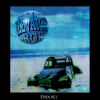 A collection of previously unreleased early material, Epidose 1showcases 14 heavily textured songs that are impressively strong, andit's not hard to see why they caught the attention of the majors. TheDrops somehow manage to be noisy and catchy, silly and heavy, all atthe same time.
A collection of previously unreleased early material, Epidose 1showcases 14 heavily textured songs that are impressively strong, andit's not hard to see why they caught the attention of the majors. TheDrops somehow manage to be noisy and catchy, silly and heavy, all atthe same time. Archenemy
The opening track "Space Song" begins and ends with jagged shards ofsound with a solid wall of noise in between, and that combination ofsharp and thick continues throughout most of the album. Lurking underall the bass and distortion are some pretty sharp hooks that punchthrough and grab you when you're not looking.
Samples are woven in ("Happy the Clown" features a sitcom laugh track)to create a surprisingly coherent collage, not unlike much of thealbum's artwork, and a snatch of Duran Duran is welded onto the end of"Floordrop Opera."
Kudos to Archenemy for getting their grubby mitts on this material andthrowing it out into the world; it's full of varied and solid nuggetswell worth saving.
sound samples:
Read More
- Administrator
- Albums and Singles
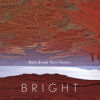 Like label-mates Landing, Bright dish out melodic tracks rooted in '70sprog rock, but with a distinctively modern feel and looks ahead asmuch as it looks to the past. With its heavy repetition and psychedelicfeel, it's also an eight-song spiritual journey.
Like label-mates Landing, Bright dish out melodic tracks rooted in '70sprog rock, but with a distinctively modern feel and looks ahead asmuch as it looks to the past. With its heavy repetition and psychedelicfeel, it's also an eight-song spiritual journey.Strange Attractors
"Manifest Harmony" in particular feels like a ritualistic incantation with circling and heavily patterned music and vocals. It's easy to imagine vocalist Mark Dwinell performing shamanic rites in the empty desert landscape shown in the album's artwork. Throughout the album Dwinell's almost-chanted lyrics are invocations atop the layers of chunky guitars. Many tracks sound like an arcane ceremony overheard through an open window. But the music isn't at all quiet and hymnal; this ain't Enya. The electric guitars continually make themselves known and they open "It's What I Need" with a snarl.
The album is laced witha distinct Eastern influence, though there aren't any actual sitars,the guitars effectively mimic their delicate sound. Ringing chimes in"Flood" reinforce the east-meets-west feeling.
The album feels so methodic and deliberate, that I was surprised to learnthat Bright generally improvise in the studio. But that also adds tothe overall spiritual feeling...instead of improvising, it feels morelike Bright was channeling.
sound samples:
Read More

